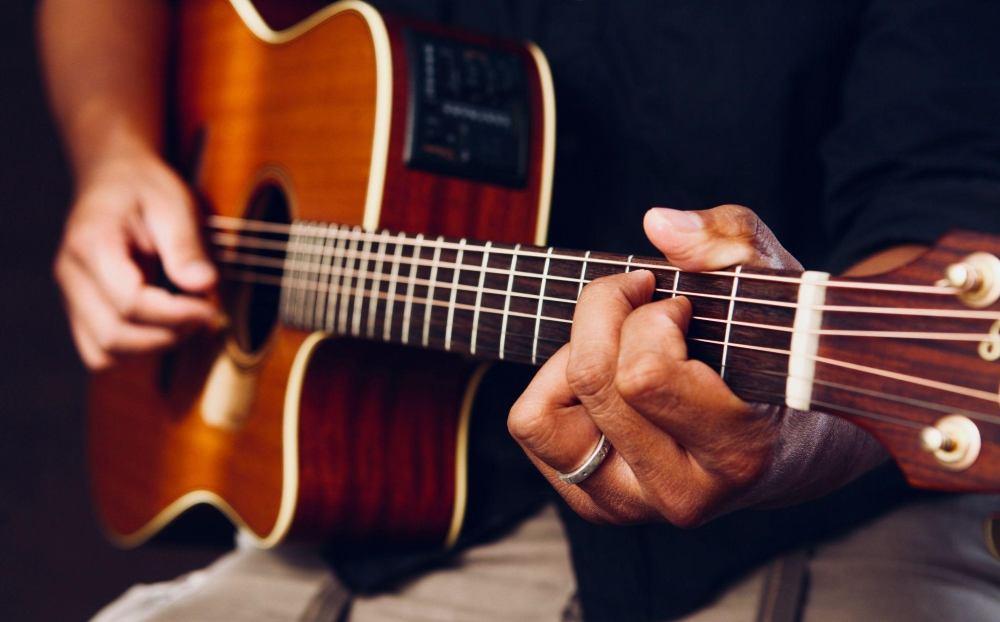The notion and picture of a guitar are highly recognizable to most people because it is one of the most popular and extensively played components in the world and one amongst the most commonly used instruments in many different current music genres.
However, the foundation for learning about guitars is a broad explanation and overview of the instrument. If you’re interested in learning about the guitar, try visiting a site about guitars and reading up on the instrument. The sound of a instrument is produced by vibrating the strings with the fingers using a pick, which causes sound waves to reverberate in the surrounding space.
The body, which is the biggest component of the instrument, is its major component. The fretboard is a long neck with spaced-apart metal wires known as frets. the tuning keys on the guitar’s top and headstock change the pitch.
Table of Contents
The strings come last
Acoustic and electric guitars are the two basic sorts, or the broad categories, and may be distinguished from one another in a number of ways. To put it simply, one requires energy and the other does not. Although the guitar may be played on its own, several popular accessories, including a capo, plectrums, slides, or string picks, straps, and numerous more, are often used in conjunction with the instrument.
Now that one has a clearer idea of what acoustic guitar is in general and some knowledge of its characteristics, they may explore a more professional definition of an instrument that includes information on its many parts and varieties.
A chordophone is an instrument for music that produces sound by vibrating a string or strings extended between two points. Click here to read more on the chordophone family. A stringed instrument like a guitar is a type of chordophone that is typically made of wood and strung with gut, nylon, or steel strings.
It can be distinguished from other kinds of chordophones by its design and tuning. The gittern, modern vihuela, the Renaissance guitar with four courses, and your five-course baroque guitar are a few examples of earlier instruments that helped shape the current 6-string guitar.
What precisely is classical guitar?
It might be difficult to tell one guitar style from another given the wide variety of guitars used nowadays. However, three characteristics set classical guitar, also known as Spanish guitar or classical guitar, apart from other guitar playing techniques.
The Mechanism
Guitars come in every size, influence, and sound conceivable today. Steel string music instruments, flamenco instruments, slide guitars, jazz guitars, acoustic guitars, electric guitars. The list is endless.
But classical musicians only ever use one particular kind of the guitar, which is known as a, you got it, classical guitar. Typical classical guitar appearance may slightly vary, but there is one simple thing that absolutely gives it away; the nylon strings.
How does this instrument differ from every other kind of guitar in the world, you might be asking? It includes the typical features seen on most guitars, including a sound hole, many frets, and six strings. A classical guitar, however, stands apart because the strings are composed of nylon, which produces a warm, rich tone.

Classical strings for guitar are often made of nylon (or other materials that generate sounds that are comparable, such as gut or carbon). Steel strings are used in the majority of other guitars, producing a brighter tone. A classical guitar’s fretboard is made somewhat broader than that of most other guitars in order to facilitate the playing of intricate finger skills.
The classical guitar’s neck is a little bit shorter, partially because of tradition and partly since this makes playing a little bit simpler. A classical guitar’s hollow body, which is always there, enables it to provide a full, resonant tone even when unamplified. Other varieties of guitars also frequently include hollow bodies, however some guitars may have a body which is solid.
There exists a rosette (https://mathstat.slu.edu/escher/index.php/Introduction_to_Symmetry) surrounding the sound hole. A “rosette” is a lovely, ornamental design that is always present around that sound hole of a classical guitar. This is only decorative and serves no practical use.
The Playing Methodology
There are thousands of distinct guitar playing techniques, just as there are hundreds of different guitar varieties. While some guitarists use picks, others use their fingers. Some guitarists perform with a lot of distortion and amplification, while others employ a more “acoustic” sound when playing.
Also Read – 5 Benefits of Adopting an Integrated Dealer System for Your Business




